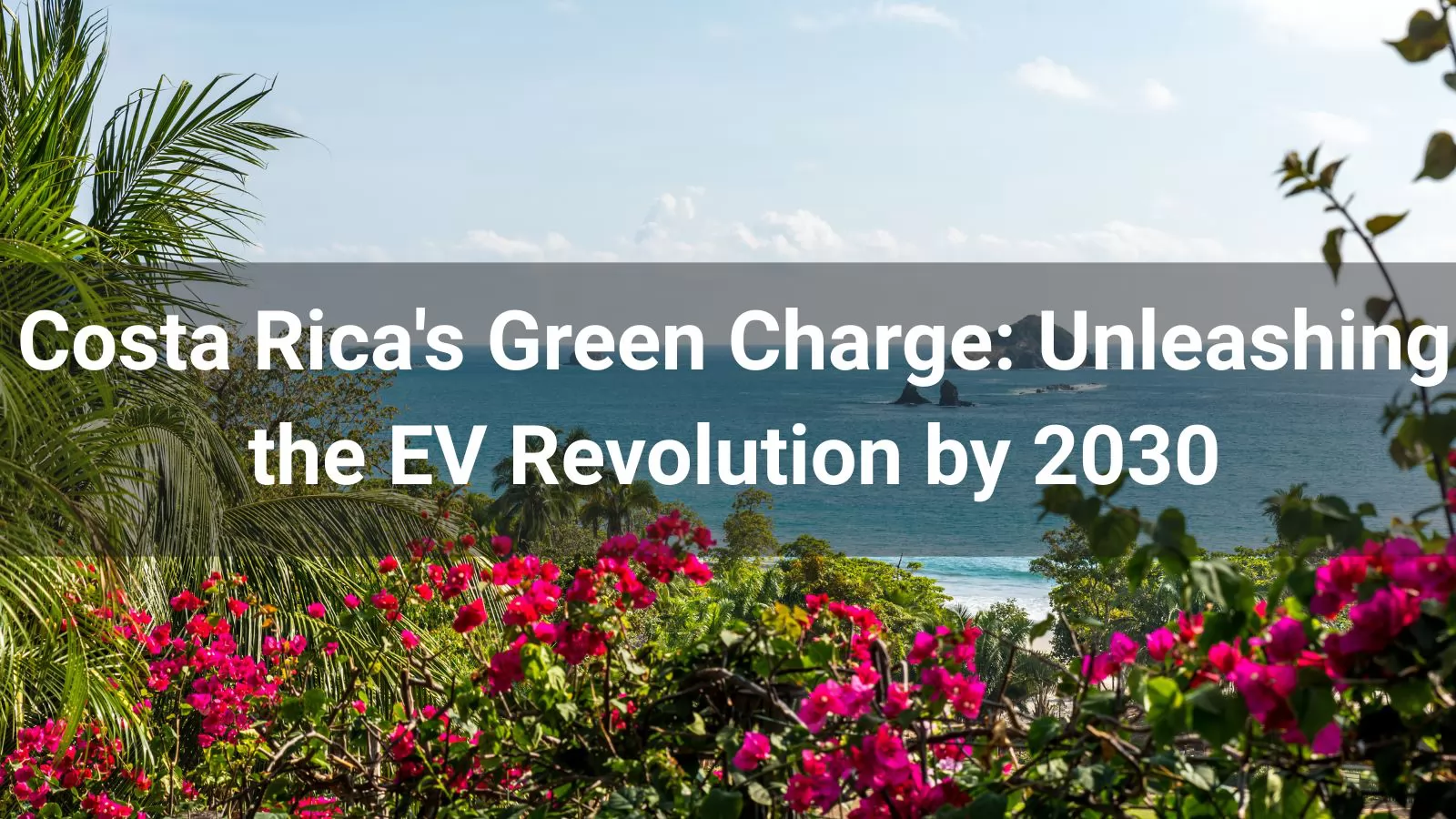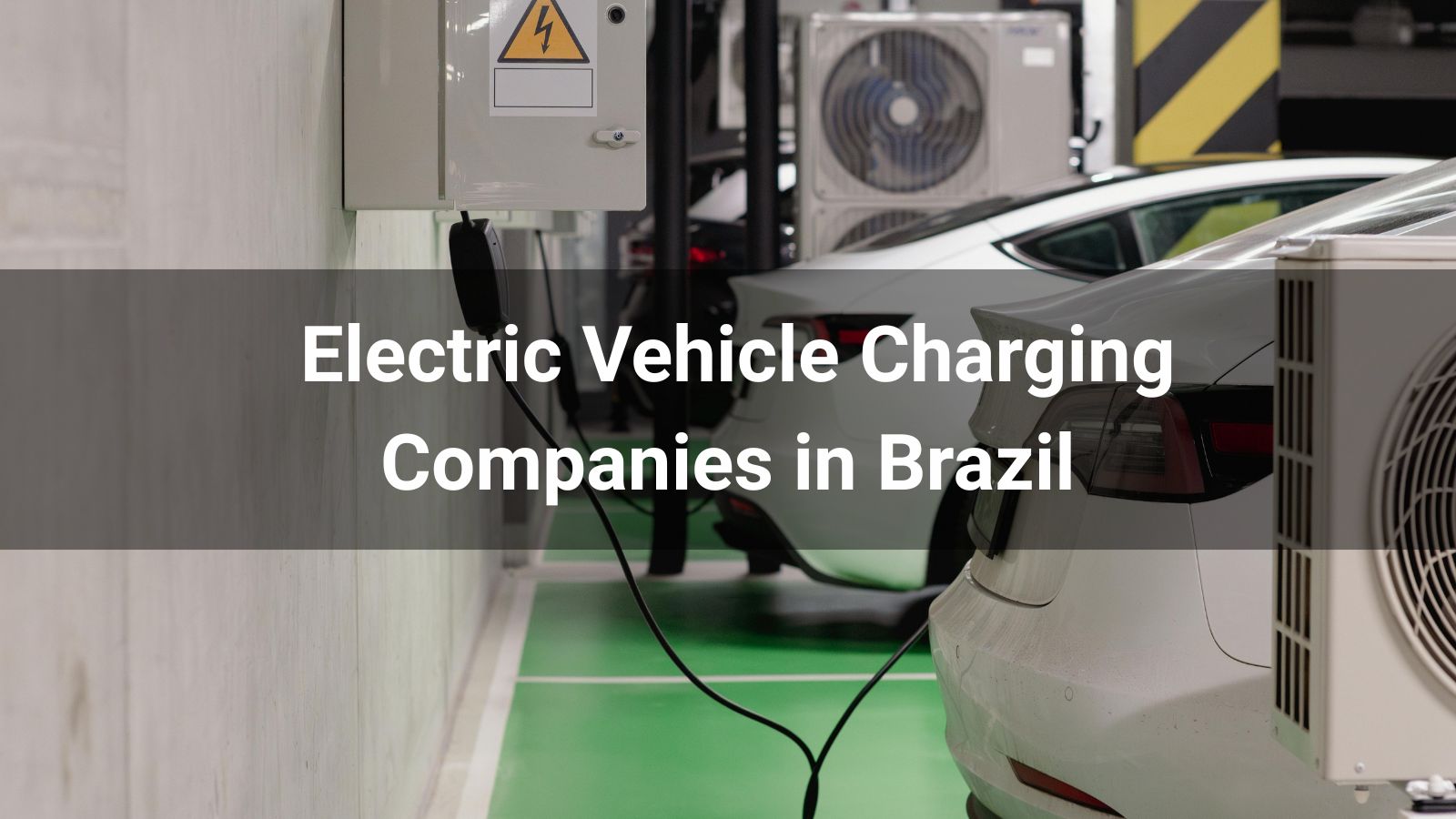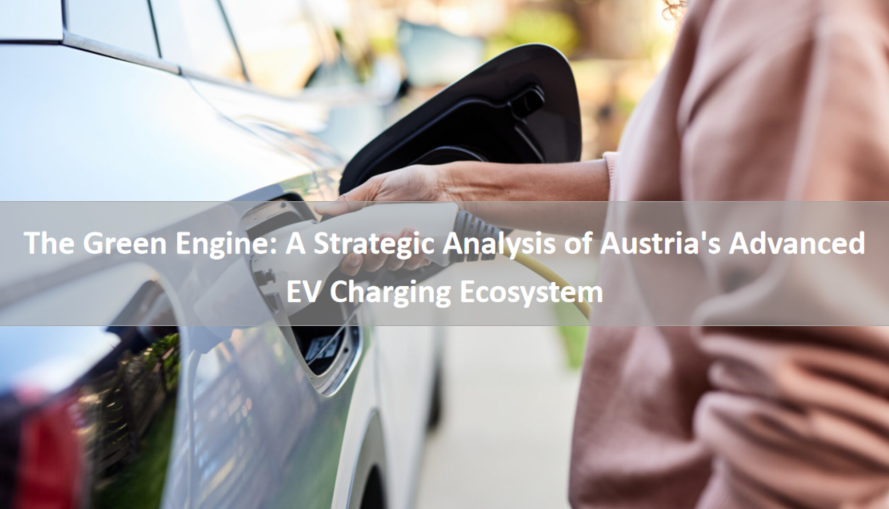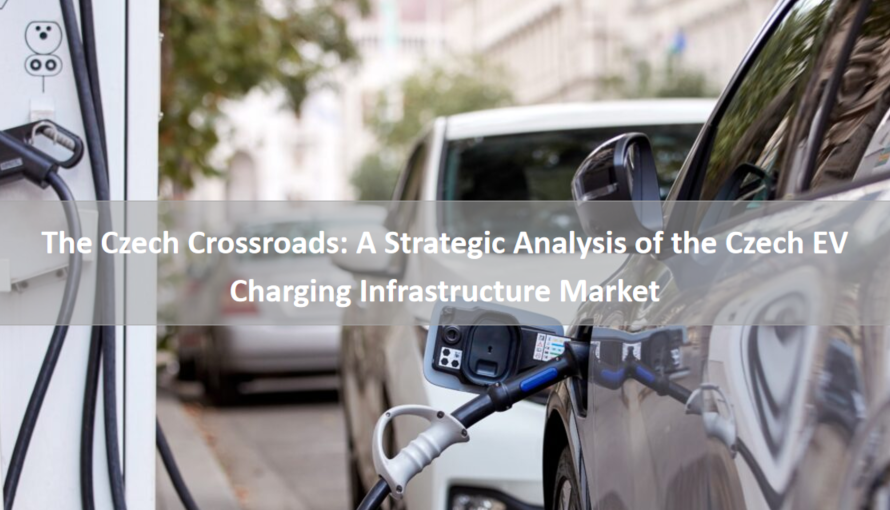
Executive Summary
Costa Rica, a global leader in sustainability, is advancing its electric vehicle (EV) charging infrastructure, leveraging its 99% renewable energy grid and progressive policies to drive electromobility in Latin America. This industry research report, tailored for operators, installers, and distributors seeking opportunities in Costa Rica’s EV charging market, analyzes national policies, market size, development status, opportunities, and challenges. Supported by the National Decarbonization Plan (NDP) and incentives like Law 9518, Costa Rica targets 10,000 charging points by 2030. The EV market is projected to grow from 5,000 vehicles in 2025 to 50,000 by 2030 at a CAGR of 58.7%, fueling demand for infrastructure. With over 400 charging stations, led by state utility ICE and private players like Blink Charging, Costa Rica is a regional pioneer. Opportunities include leveraging renewable energy, multi-standard DC chargers, and tourism-driven demand, while challenges such as high installation costs, regulatory gaps, and rural access persist. Anari Energy’s Vulco DC Series offers solutions to these barriers, ensuring compatibility and scalability. Strategic recommendations focus on partnerships, regulatory alignment, and consumer engagement to capitalize on Costa Rica’s green vision.
1. National Policies
Costa Rica’s national policies for EV charging infrastructure are exemplary, driven by the National Decarbonization Plan, Law 9518, and a 99% renewable energy grid, targeting 10,000 charging points by 2030. However, regulatory gaps and limited funding for rural expansion risk slowing progress.
1.1 National Decarbonization Plan (NDP) and Law 9518
-
The NDP, launched in 2019, targets 25% EV market share by 2030 and 10,000 charging points, with a focus on public transport electrification. Law 9518 offers tax exemptions on EV purchases (e.g., zero VAT, import duties), reducing costs by up to 30%, similar to Romania’s incentives.
-
Incentives for charging infrastructure include subsidies up to USD 50,000 per station for private operators, akin to Romania’s ElectricUP program but tailored to tourism hubs.
1.2 Infrastructure Development Initiatives
-
The Costa Rican Electricity Institute (ICE) leads deployment, targeting 1,000 high-power stations by 2026, with AHP-GIS integration for optimal placement, mirroring Romania’s data-driven approach.
-
The “Ruta Eléctrica” initiative promotes charging corridors along tourist routes like San José to Monteverde, enhancing accessibility for visitors.
1.3 Renewable Energy Integration
-
Costa Rica’s 99% renewable energy grid (hydropower, geothermal, solar, wind) supports sustainable charging, with 3.2 GW installed capacity. Projects like the 50 MW Orosi Wind Farm enable green charging hubs, aligning with Belarus’ nuclear-powered model.
-
Smart grid and vehicle-to-grid (V2G) pilots, supported by ICE, optimize grid usage, though scaling requires significant investment.
1.4 Regulatory Framework Challenges
-
While OCPP 1.6 is adopted, the lack of universal connector standards (e.g., CCS2, CHAdeMO, NACS/J3400) risks compatibility issues, similar to Belarus’ gaps.
-
Bureaucratic delays in permitting and limited funding for rural chargers hinder equitable access, unlike Romania’s EU-backed model.
2. Market Size
Costa Rica’s EV market is growing rapidly, projected to expand from 5,000 vehicles in 2025 to 50,000 by 2030 at a CAGR of 58.7%, driving demand for charging infrastructure. With over 400 stations, the market is poised for expansion, supported by tourism and renewable energy.
2.1 EV Market Growth
-
Costa Rica’s EV market, with 5,000 vehicles in 2025 (up from 2,500 in 2023), is projected to reach 50,000 by 2030, driven by tax exemptions, tourism demand, and models like BYD’s Yuan Plus. The CAGR of 58.7% surpasses Romania’s 43.1% due to strong policy support.
-
The tourism sector, contributing 8% to GDP, drives demand for rental EVs, unlike Kuwait’s urban focus.
2.2 Charging Infrastructure Market
-
As of 2025, Costa Rica has over 400 charging stations, including 100 high-power (≥50 kW) units, led by ICE and private operators like Blink Charging. The NDP targets 10,000 points by 2030, aiming for a 5:1 EV-to-charger ratio, exceeding global benchmarks.
-
The global EV charging market, projected to grow from USD 30.63 billion in 2025 to USD 257.33 billion by 2032 at a CAGR of 35.5%, highlights Costa Rica’s potential.
2.3 Comparative Insights
-
Costa Rica’s 400 stations lag behind Romania’s 4,000 but surpass Côte d’Ivoire’s 30, reflecting its early-stage but ambitious market.
-
The focus on tourism-driven chargers aligns with China’s urban-centric model, but rural expansion is critical for broader adoption.
3. Development Status
Costa Rica’s EV charging infrastructure is progressing, with over 400 stations, primarily in urban and tourist areas, led by ICE and private players. Renewable energy integration drives sustainability, but limited super-fast chargers and rural access hinder scalability.
3.1 Current Infrastructure Deployment
-
Costa Rica operates over 400 charging stations, with 100 high-power units in San José, Guanacaste, and Puntarenas, according to Electromaps data. ICE’s network leads, with private operators like Blink Charging expanding in tourist areas.
-
Only 5% of stations are super-fast (≥150 kW), limiting long-distance travel compared to Belarus’ 350 kW chargers.
3.2 Private-Sector and Public Engagement
-
ICE collaborates with private players like Blink and Efacec, leveraging NDP subsidies to deploy chargers at hotels and eco-lodges, unlike Belarus’ state-driven model.
-
Partnerships with rental companies like Adobe Rent-a-Car integrate chargers into tourism infrastructure, mirroring Kuwait’s dealership approach.
3.3 Renewable Energy Integration
-
Costa Rica’s 99% renewable grid, with 3.2 GW capacity, supports green charging. Projects like the 40 MW Miravalles Solar Park enable co-located chargers, similar to Romania’s solar initiatives.
-
Smart charging and V2G pilots, supported by ICE, optimize grid usage, though rural grid limitations persist.
3.4 Grid and Technological Constraints
-
The grid faces peak load challenges, with transport accounting for 15% of energy demand. Uncoordinated charging risks strain, as noted by the IEA.
-
Limited NACS/J3400 adoption, despite CCS2 dominance, risks compatibility issues with emerging EVs, similar to Romania’s challenges.
4. Opportunities
Costa Rica’s EV charging market offers significant opportunities, driven by its renewable energy leadership, tourism demand, and NDP funding. Multi-standard DC chargers, like Anari Energy’s Vulco DC Series, and public-private partnerships can accelerate growth for operators, installers, and distributors.
4.1 Renewable Energy Leadership
-
Costa Rica’s 99% renewable grid supports green charging hubs, with projects like the Orosi Wind Farm reducing costs. Co-locating chargers with renewables, as in Romania, enhances sustainability.
-
V2G systems, as in Europe’s ISO 15118-20 standard, create revenue streams for operators, with Anari’s Vulco DC Series enabling grid services.
4.2 Tourism-Driven Demand
-
The tourism sector, attracting 2 million visitors annually, drives demand for EV chargers at eco-lodges and national parks, unlike Belarus’ urban focus.
-
Distributors can target rental companies and hotels with scalable solutions like the Vulco DC Series.
4.3 NDP Funding and Incentives
-
The NDP’s USD 100 million for charging infrastructure and subsidies up to USD 50,000 per station provide operators and installers with financial support, surpassing Kuwait’s limited funding.
-
Distributors can leverage this to distribute high-power chargers, meeting NDP targets.
4.4 Multi-Standard DC Charger Innovation
-
Multi-standard DC chargers supporting CCS2, CHAdeMO, and NACS/J3400, like Anari’s Vulco DC Series, ensure compatibility with Costa Rica’s growing EV fleet, including BYD and Tesla models.
-
Battery-swapping stations, successful in China with 50% of heavy-duty trucks, could support Costa Rica’s electrobus and rental fleets.
5. Challenges
Costa Rica’s EV charging infrastructure faces challenges, including high installation costs, grid constraints, regulatory gaps, and rural access barriers. Solutions like Anari Energy’s Vulco DC Series can address these, ensuring scalability and profitability.
5.1 High Installation Costs
-
High-power DC chargers (150–350 kW) cost USD 20,000–USD 80,000 to install, with grid upgrades adding USD 30,000 per site, similar to Romania’s challenges. Low rural utilization reduces ROI.
-
NDP subsidies mitigate costs, but funding gaps for rural areas persist, as noted in regional reports.
5.2 Grid Constraints
-
The 3.2 GW grid faces peak load issues, with 15% of energy demand from transport. Uncoordinated charging risks outages, as highlighted by the IEA.
-
Rural grid limitations, requiring €500 million in upgrades by 2030, pose scalability challenges.
5.3 Regulatory Gaps
-
Inconsistent connector standards and permitting delays, as in Belarus, complicate installations, requiring alignment with AFIR-like standards.
-
Limited NACS/J3400 adoption risks compatibility issues with emerging EVs.
5.4 Rural Access and Consumer Hesitancy
-
Sparse rural infrastructure, with 80% of chargers in urban areas, exacerbates range anxiety, as noted by PwC.
-
High upfront EV costs and limited consumer awareness, as in Kuwait, deter adoption outside tourism sectors.
Strategic Recommendations for Operators, Installers, and Distributors
-
Accelerate High-Power Charger Deployment
-
Operators should prioritize 150–350 kW multi-standard DC chargers, like Anari’s Vulco DC Series, along tourist routes and urban centers to meet NDP targets.
-
Installers can leverage plug-and-play designs to reduce deployment time by 20%, ensuring compliance with local codes.
-
Streamline Regulatory Compliance
-
Operators and distributors should advocate for OCPP 2.0 and ISO 15118 adoption to ensure interoperability, aligning with global standards.
-
Engage ICE to harmonize permitting, reducing delays by 25%, as seen in Romania.
-
Foster Strategic Partnerships
-
Operators and installers should partner with Anari Energy (www.anariev.com) to deploy cost-effective, high-power chargers, leveraging NDP subsidies.
-
Distributors can collaborate with ICE and tourism operators to distribute Anari’s Vulco DC Series, capitalizing on rental demand.
-
Promote Consumer Adoption
-
Operators should launch campaigns via Electromaps and ICE’s app to highlight charger locations and EV benefits, addressing range anxiety through test drives, as in Côte d’Ivoire.
-
Distributors can offer leasing models with Anari’s chargers to reduce upfront costs.
-
Leverage Renewable Energy and NDP Funds
-
Operators should co-locate chargers with renewable projects, using Anari’s V2G-enabled Vulco DC Series to manage peak loads and generate revenue.
-
Distributors should target Latin American markets, leveraging Costa Rica’s leadership to distribute scalable solutions.
Conclusion
Costa Rica is a trailblazer in Latin America’s electromobility landscape, with over 400 charging stations and a projected EV market of 50,000 vehicles by 2030. Its 99% renewable grid, NDP funding, and tourism-driven demand fuel progress, but high costs, grid constraints, and rural access challenges require strategic solutions. Anari Energy’s Vulco DC Series, with its multi-standard compatibility, energy efficiency, and modular design, addresses these barriers, offering operators, installers, and distributors a competitive edge. By leveraging partnerships, aligning with global standards, and tapping tourism opportunities, stakeholders can drive Costa Rica’s electric future. Contact Anari Energy at www.anariev.com to explore innovative charging solutions and seize this vibrant market opportunity.
Read more:
10 Best DC Fast Chargers 2025
Top 10 EV Charging Companies in the World 2025
Top 10 DC EV Charger Companies in China 2025








